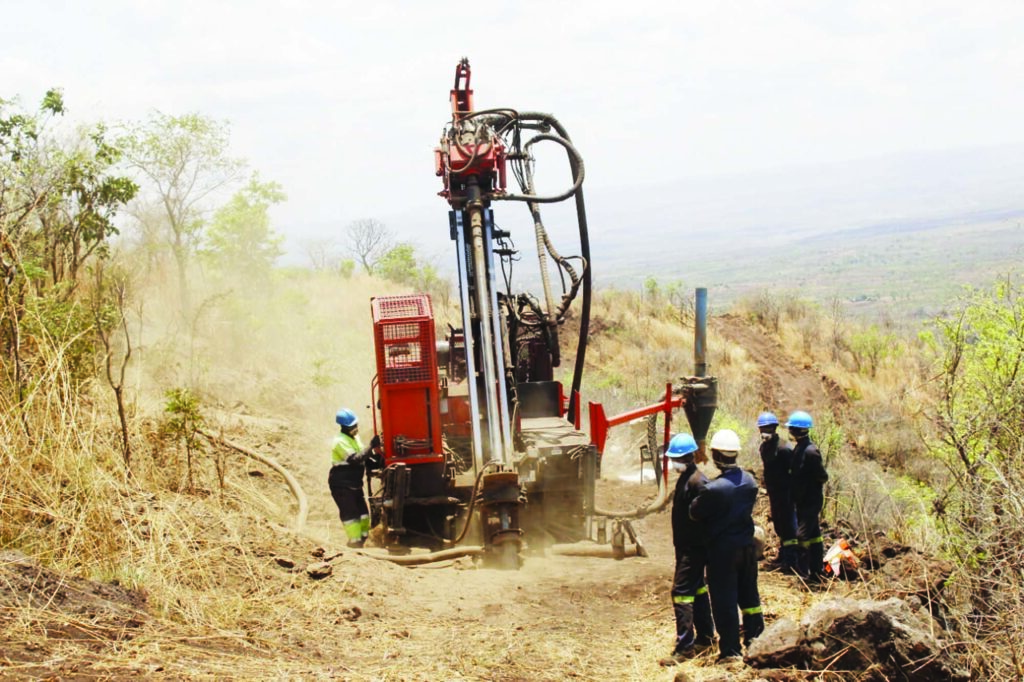
Mining & Trade News
Malawi Online News
Top Stories
Mining
Kangankunde infill drilling results deliver consistent high grade rare earths
March 12, 2024 / Marcel Chimwala

ASX-listed Lindian Resources, which is conducting mine development studies at its Kangankunde Project in Malawi’s Balaka District, says infill drilling results from the project show strong continuity of high grade mineralisation from surface to end of hole in planned first phase mining areas.
Lindian CEO Alistair Stephens explains that assay results received for initial 21 holes of the Phase 3 infill drilling program has displayed consistent outstanding high-grade mineralisation demonstrating strong continuity.
• Significant intersections include:
❖ 150 metres from surface to EOH averaging 3.78% TREO in KGKRC087
❖ 75 metres from surface to EOH averaging 3.57% TREO in KGKDD011
❖ 70 metres from surface to EOH averaging 3.44% TREO in KGKDD012
❖ 150 metres from surface to EOH averaging 3.21% TREO in KGKRC086 including: o 38 metres @ 4.63% TREO from 74 metres to 112 metres
❖ 150 metres from surface to EOH averaging 3.18% TREO in KGKRC112
❖ 75 metres from surface to EOH averaging 3.15% TREO in KGKDD010
❖ 150 metres from surface to EOH averaging 2.81% TREO in KGKRC10
Stephens reports that samples from a further 28 holes are being analysed and expected to be released prior to the end of February.
The results from Phase 3 program aim to define a portion of Kangankunde’s current Mineral Resource Estimate (MRE) of 261 million tonnes grading 2.19% TREO as indicated category.
He says an updated MRE including the Indicated Resource category will be reported prior to the release of the Feasibility Study which is scheduled for the end of the March quarter while a Maiden Ore Reserve statement will be reported with the Feasibility Study.
Stephens also reports that processing plant engineering and mine development works are proceeding as planned.
He says: “The first assays from our Phase 3 drill program are again very encouraging, with grades in one 38 metre interval of 4.63% TREO (or 46,300 ppm TREO), and demonstrate that high grade rare earths are consistent across a ~300m section from surface of the Kangankunde deposit which is particularly noteworthy as we advance towards the Phase 1 mining and processing operation.”
“We are on track to report our upgraded MRE this quarter which will be followed shortly thereafter by our Feasibility Study. Kangankunde is uniquely positioned as one of the world’s largest rare earths projects, based on a globally recognised reporting code, and underpinned by exceptionally high grade in a market where grade is now clearly king. We anticipate a more regular flow of updates as the next two quarters unfold.”
Lindian Executive Chairman Asimwe Kabunga commented that the assay results from the Phase 3 drill program are an important body of work and key to the delivery of the Feasibility Study for the Stage1 mine development that is now underway.
“This Study, which will also include an Ore Reserve statement for Kangankunde for the first time, will allow us to very clearly define first stage capital expenditure and operational expenditure, and showcase what we expect will be a robust project that can rapidly deliver a new source of dependable supply of rare earths to processors and end users. As our quarterly report reiterates, we are well funded with lots of optionality to fund our Stage 1 plant and the initial early works phase which will be underway soon,” Kabunga says.
The holes reported are infill holes designed to provide sufficient data to increase the confidence level of a portion of the MRE to Indicated status.
Once the remaining results are received from the assay laboratory, the resource model will be updated and applied to detail mine design and scheduling.
The areas targeted by the Phase 3 infill program are those considered most likely to define initial feed for operation of the Stage 1 Processing facility.
These are a) the northern area of the central carbonatite complex, the western area of the central carbonatite complex; and the south-eastern area of the central carbonatite complex.
Non-Radioactive Mineralisation
Stephens reports that radionuclides uranium (U) and thorium (Th) continue to be low in all areas of Kangankunde Project.
“The Company has independent confirmation of the low radiation of mineralisation at Kangankunde, with independent government agency ANSTO Minerals (Australia Nuclear Science Technology Organisation) confirming that Kangankunde Rare Earth mineral concentrates are not classified as radioactive for transport,” he says.
Drilling programme status
The Phase 3 program has been completed with 45 RC holes for 4,666 metres and 3 core drill holes for 220 metres. The program was designed to give infill data for resource evaluation and mine planning of areas targeted to potentially provide the initial years of production.
In August 2023, Lindian announced its maiden Mineral Resource Estimate (MRE) for the Kangankunde Rare Earths Project in Malawi of 261 million tonnes averaging 2.19% TREO above a 0.5% TREO cutoff grade, and estimated in accordance with JORC 2012 guidelines.
Processing plant engineering
Lindian’s team is also progressing with:
• Determination of the preferred provider in relation to the tender of civil works contract(s), inclusive of works for the access road upgrade, bulk earthworks for the Plant & associated infrastructure, Tails Storage Facility (TSF) and Return Water Dam (RWD),
• Finalisation of the tender for the supply of Process Plant and associated infrastructure for Engineering, Procurement, Construction and Commissioning,
• Resource model update and detailed mine design and mine schedule,
• Short-listing of power and fuel supply options while contract terms are being finalised for all stream of works.































